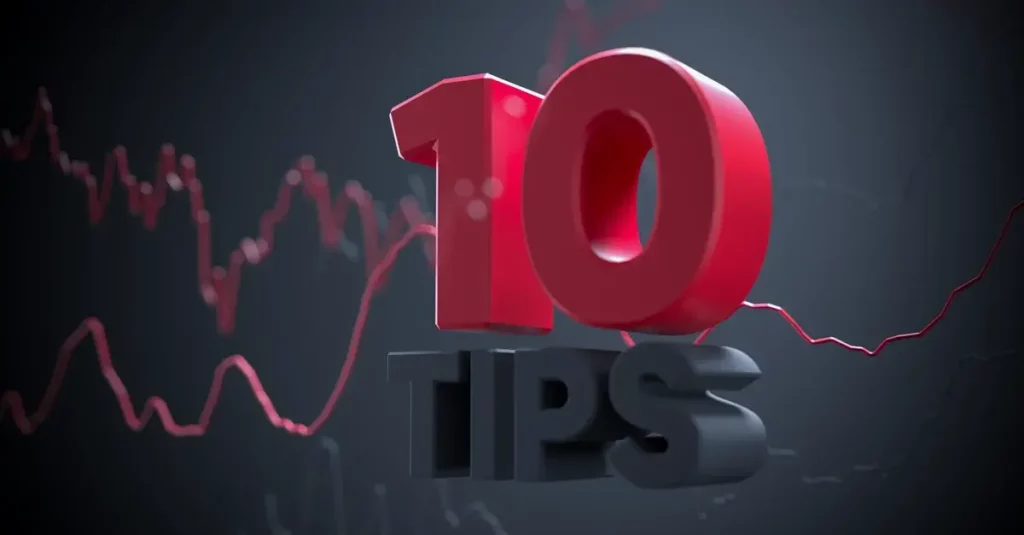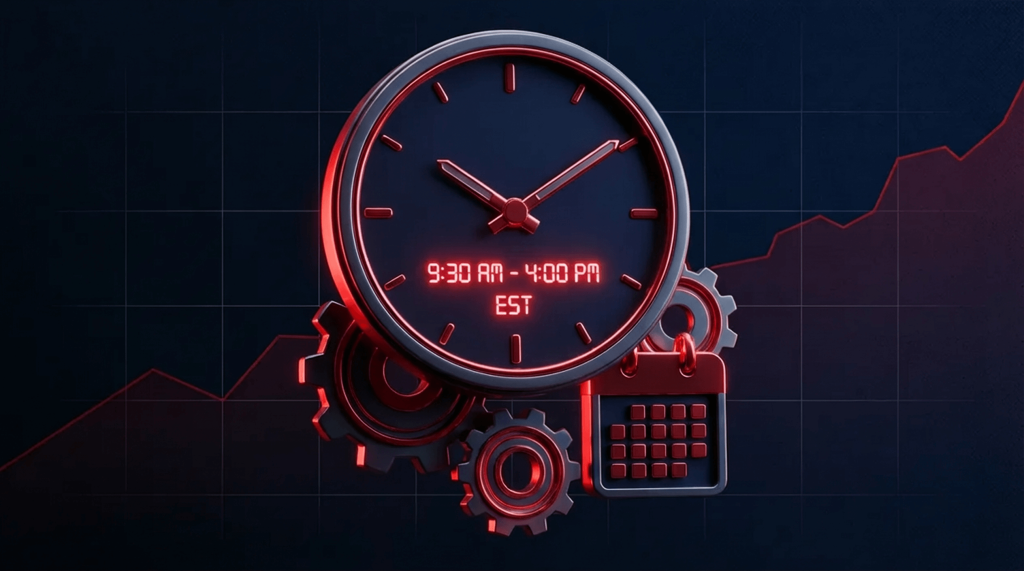
Торговля на Форекс: 10 советов, которые действительно работают
В статье
Торговля на Форекс является выгодной областью для финансового развития, учитывая ее большую ликвидность и постоянное присутствие на рынке. Однако эффективное управление валютными рынками требует стратегического планирования и строгой реализации, а не только знания фундаментальных принципов. Эта статья призвана предоставить полезные и практические рекомендации, которые помогут значительно повысить эффективность вашей торговли на Форекс и конечные результаты. От управления рисками до психологической подготовки — эти советы предоставляют как начинающим, так и опытным трейдерам инструменты для разумной и эффективной торговли.
Список 10 основных советов по торговле на Форекс
- Внедрите управление рисками
- Будьте в курсе событий на рынке
- Разработайте последовательную торговую стратегию
- Освойте методы анализа рынка
- Фокус на определенном сегменте рынка
- Понимайте и используйте кредитное плечо с умом
- Потренируйтесь на демо-счете перед началом работы
- Используйте технологические инструменты
- Оптимизация времени торговли
- Инвестируйте в непрерывное обучение
Разбираем советы
1. Внедрите управление рисками
Торговля на Форексе во многом зависит от разумных методов управления рисками, которые являются основой прибыльных торговых стратегий. Вот ключевые компоненты и базовые механизмы эффективного подхода к управлению рисками:
Установка максимального риска на сделку
Речь идёт об управлении степенью риска для капитала, связанного с одной сделкой. Обычно в каждой сделке вы рискуете примерно 1–2% от всего вашего торгового капитала. Например, если на вашем торговом счёте $10 000, вы рискуете всего $100–200 за сделку. В случае нескольких последовательных убыточных сделок этот принцип помогает защитить ваш счёт от значительных потерь.
Соотношение риска и вознаграждения
Концепция сравнивает возможный убыток от сделки (риск) с возможной выгодой. При хорошем соотношении риска к доходности, например, 1:3, цель состоит в том, чтобы получить три доллара прибыли на каждый рискованный доллар. Такой подход гарантирует, что прибыльные сделки компенсируют убытки, даже если не все из них окажутся успешными, что приводит к чистой прибыли.
Использование стоп-ордеров
Ключевым инструментом контроля риска является стоп-лосс. Если рынок развернётся против вас, ордер автоматически закроет сделку по указанной цене, чтобы предотвратить дальнейшие убытки. Например, если вы покупаете валютную пару по цене 1,3050 и устанавливаете стоп-лосс на уровне 1,2950, ваша сделка немедленно закроется, как только цена достигнет 1,2950, тем самым ограничивая ваши убытки.
Регулярный пересмотр и корректировка стратегий
Управление рисками — это не просто бизнес, который можно установить и забыть. Оно зависит от вашего торгового успеха и изменений на рынке, требующих постоянного отслеживания и корректировки. Чтобы соответствовать постоянно меняющемуся рынку Форекс, необходимо регулярно оценивать свои сделки и корректировать свою толерантность к риску.
2. Будьте в курсе событий на рынке
Успех торговли на Форекс во многом зависит от вашей способности распознавать и реагировать на рыночные колебания, которые во многом определяются мировыми экономическими событиями и тенденциями. Для принятия правильных решений и поддержания актуальности информации требуются различные инструменты и ресурсы:
Экономические календари
ForexFactory и другие сайты предоставляют подробные экономические календари с предстоящими важными событиями, такими как данные по ВВП, решения по процентным ставкам и данные о занятости. В этих календарях представлено множество прогнозов и данных о прошлых показателях, что позволяет трейдерам предсказывать реакцию рынка.
Службы новостей в реальном времени
Очень полезно подписаться на финансовые новостные сайты, такие как Bloomberg, Reuters или CNBC, которые освещают события в режиме реального времени. На этих сайтах публикуются последние новости, мнения экспертов и самая актуальная информация о событиях в мировой экономике, которые могут повлиять на рынки Форекс.
Такие сайты, как Trading Economics, предоставляют инструменты для мониторинга и оценки ряда экономических показателей во многих странах, тем самым освещая состояние мировой экономики.
Многие форекс-брокеры предоставляют своим клиентам маркетинговые исследования и аналитику. Обычно это включает в себя технические анализы, ежедневные обзоры рынка и торговые сигналы.
Такие приложения, как Investing.com или мобильные версии Bloomberg и Reuters, полезны трейдерам, которым необходимо быть в курсе событий на ходу. Эти инструменты включают в себя рыночные исследования, новости в режиме реального времени и финансовую статистику.
Социальные сети и онлайн-форумы
Такие платформы, как X (ранее Twitter), могут быть удивительно полезны для быстрого получения обновлений. Следя за публикациями уважаемых аналитиков, опытных трейдеров и финансовых учреждений, можно получать актуальную информацию. Кроме того, участие в онлайн-форумах, посвящённых торговле на Форекс, может дать представление о настроениях рынка.
3. Разработайте последовательную торговую стратегию
Долгосрочный успех на рынке Форекс зависит от разработки и поддержания последовательной торговая стратегия Различные торговые подходы подходят разным типам личности, уровню готовности к риску и наличию времени. Давайте рассмотрим некоторые из наиболее часто используемых торговых техник:
Дневная торговля
Внутридневная торговля предполагает совершение множества транзакций в течение одного торгового дня с закрытием позиций в конце дня, чтобы избежать риска значительных переносов через ночь. Этот метод подойдёт трейдерам, которые предпочитают быстрые решения и мгновенную прибыль, а также могут провести весь торговый день, наблюдая за рынками. Эффективная внутридневная торговля зависит от технического анализа, построения графиков в режиме реального времени и отслеживания экономических событий. Среди необходимых инструментов — быстрое интернет-соединение, несколько мониторов для одновременного отслеживания нескольких активов и надёжный торговая платформа что делает возможным быстрое исполнение заказов.
Скальпинг
Скальпинг – это торговая техника, которая часто позволяет удерживать позиции всего несколько минут или даже секунд, ориентированная на совершение нескольких сделок для извлечения выгоды из небольших ценовых колебаний. Она подходит трейдерам, способным адаптироваться к напряженной торговой среде и быстро принимать решения, не задумываясь. Обычно скальперы используют значительное кредитное плечо для увеличения прибыли от небольших ценовых колебаний и торгуют на очень краткосрочных графиках – минутных или пятиминутных. Успех скальпинга критически зависит от скорости исполнения и доступности данных в режиме реального времени, поскольку задержки могут существенно повлиять на прибыльность.
Свинг-трейдинг
Свинг-трейдинг, позволяющий удерживать позиции в течение многих дней или недель, чтобы поймать рыночные изменения, сочетает в себе высокую скорость дневной торговли с долгосрочной стратегией позиционной торговли. Этот метод подойдёт трейдерам, которые могут анализировать рынки несколько раз в течение дня, но не могут торговать постоянно. Свинг-трейдерам необходимо знать графические модели, индикаторы и более общие рыночные тенденции, поскольку они часто полагаются на сочетание технического и фундаментального анализа. Стремясь максимизировать возможную прибыль от рыночных колебаний, они пытаются определить начало ценового движения и удерживать его до затухания тренда.
Вам следует тщательно протестировать свою стратегию, прежде чем применять её на реальном рынке. Демо-среда или бэктестинг позволяют вам воспроизводить сделки без финансового риска и оценивать эффективность вашей стратегии. Тем не менее, обучение никогда не прекращается. Понимая, что рынок Форекс динамичен и требует гибкого подхода, успешный трейдер постоянно готов корректировать свою стратегию в ответ на меняющиеся рыночные обстоятельства или изменения в результатах своей торговли. Не менее важны самоотверженность и терпение, необходимые для следования своему плану, особенно в трудные времена. Важно быть уверенным в своей тщательно спланированной стратегии, но при этом понимать, что не каждая сделка принесёт прибыль. Тем не менее, настойчивость и следование своей стратегии будут определять ваш долгосрочный опыт торговли.
4. Освойте методы анализа рынка
Разработка эффективных торговых стратегий и принятие взвешенных решений при торговле на Форексе зависят от владения инструментами анализа рынка. На Форексе анализ рынка — это изучение множества факторов и сигналов, влияющих на обменный курс. Он включает в себя фундаментальный анализ, то есть оценку экономических данных и новостных событий, а также технический анализ, сосредоточенный на графических моделях и динамике цен в прошлом. Давайте теперь подробнее рассмотрим эти фундаментальные элементы:
Технический анализ
- Графические модели и тренды: Знание таких графических моделей, как «голова и плечи», «треугольники» и «флаги», может помочь понять возможные колебания рынка.
- Технические индикаторы: Используя индикаторы, такие как скользящие средние, полосы Боллинджера или Индекс относительной силы (RSI) может помочь определить тенденции, импульс и потенциальные точки входа и выхода.
- Свечные модели: Изучение того, как интерпретировать свечные паттерны, может обеспечить глубокий анализ настроений рынка и вероятных разворотов цен.
Фундаментальный анализ
- Экономические показатели: отслеживание таких показателей, как рост ВВП, процентные ставки, уровень безработицы и инфляция, может дать представление о состоянии экономики страны и его влиянии на ее валюту.
- Политические и экономические события: На рынок Форекс могут существенно влиять политические события, изменения в законодательстве и экономические данные. Будьте в курсе мировых событий.
- Настроения рынка: на торговые решения может влиять общее отношение участников рынка — оптимистичное или негативное.
5. Сосредоточьтесь на конкретном сегменте рынка
Сосредоточение внимания на конкретной валютной паре или сегменте рынка, особенно на таких основных парах, как EUR/USD или USD/JPY, поможет вам улучшить свои торговые навыки и результаты. Эта специализированная стратегия обеспечивает стабильность и ликвидность, позволяя вам изучить тонкости этих секторов рынка.
Углубленный анализ
Сосредоточившись на определённых парах, вы сможете глубже понять экономическую ситуацию и денежно-кредитную политику соответствующих стран. Это включает в себя изучение того, как глобальные события могут повлиять на эти валюты, и освоение навыков интерпретации их рыночного поведения и технических индикаторов. Достичь такого уровня целенаправленного анализа сложнее, когда ваше внимание рассеяно между несколькими рынками.
Диверсификация в фокусе
По-прежнему важно диверсифицировать инвестиции в рамках выбранной вами сферы деятельности. Например, торговля несколькими валютными парами может помочь распределить риски, если вы сосредоточитесь на основных валютах. Понимание взаимосвязей между несколькими валютными парами, например, как динамика EUR/USD соотносится с EUR/GBP, также может дать стратегическое преимущество при прогнозировании рыночных тенденций.
6. Понимайте и используйте кредитное плечо с умом
Хотя кредитное плечо значительно увеличивает вашу прибыль, оно является эффективным инструментом торговли на Форексе, но сопряжено с большими рисками. Вы инвестируете небольшую часть собственных средств, а затем занимаете остаток у брокера, фактически одалживая капитал для инвестиций. Секрет заключается в разумном использовании кредитного плеча и понимании как его возможных преимуществ, так и недостатков.
Начиная с более низких коэффициентов кредитного плеча
Новичкам разумно начинать с более низкого кредитного плеча. Такой подход минимизирует риск, пока вы знакомитесь с динамикой рынка. По мере накопления опыта и уверенности вы можете осторожно увеличивать кредитное плечо.
Преимущества использования кредитного плеча
- Эффективность капитала: Кредитное плечо позволяет вам открывать более крупные позиции, чем позволяет ваш собственный капитал, тем самым потенциально увеличивая доходность ваших инвестиций.
- Увеличение потенциала прибыли: При использовании кредитного плеча даже небольшие колебания цен могут привести к большой прибыли, особенно на таком рынке, как Форекс, где колебания весьма существенны.
- Гибкость торговой стратегии: Для определенных торговых подходов кредитное плечо может быть стратегическим инструментом, позволяющим трейдерам получать прибыль как от краткосрочных, так и от долгосрочных колебаний рынка.
You may also like

Потенциальные недостатки
- Усиленные потери: Кредитное плечо может не только увеличить прибыль, но и увеличить убытки. Небольшое неблагоприятное движение рынка может привести к значительным убыткам, превышающим ваши первоначальные инвестиции.
- Маржинальные требования: Если рынок развернется против вашей позиции, вы можете потребовать внесения дополнительного депозита и внести дополнительные средства для поддержания открытой позиции.
- Повышенный стресс и риск: Особенно в неопределенных рыночных ситуациях управление кредитной позицией может быть опасным и утомительным.
Управление позициями с использованием заемных средств
Использование кредитного плеча в торговле на Форексе требует применения эффективных стратегий управления рисками. Позиции с кредитным плечом несут в себе риски, поэтому требуют регулярного и тщательного мониторинга. Быстрые изменения рыночной ситуации требуют бдительности, чтобы быстро и правильно реагировать на них. Более того, необходимо глубокое понимание как работает кредитное плечо На рынке Форекс крайне важно изучить его перед включением в свой торговый план. Знание механизмов, опасностей и оптимальных методов использования поможет вам грамотно применять этот инструмент в своей торговле.
7. Потренируйтесь на демо-счете перед началом работы
Невозможно переоценить важность практики на демо-счёте перед выходом на реальный рынок Форекс. Демо-счёты предоставляют уникальную и ценную возможность ощутить динамику рынка Форекс, не рискуя потерять реальные деньги. Использование демо-счёта может быть полезно как новичкам, так и опытным трейдерам по ряду причин:
Знакомство с торговыми платформами
Различные торговые платформы предлагают разнообразные функции и инструменты. Демо-счёт поможет вам научиться успешно ориентироваться на этих платформах и пользоваться ими. На таких платформах, как MetaTrader 4/5 или TradingView, вы сможете изучить и попрактиковаться в использовании инструментов построения графиков, индикаторов и различных типов ордеров.
Стратегии тестирования и уточнения
Демо-счета — идеальная площадка для отработки новых стратегий. Пробуйте различные стратегии, такие как дейтрейдинг, скальпинг или свинг-трейдинг, в различных рыночных условиях и наблюдайте за их эффективностью. Применение стоп-лоссов и тейк-профитов без давления реальных финансовых потерь также помогает понять принципы управления рисками на практике.
Понимание рыночных движений
На рынок Форекс влияет множество факторов, упомянутых выше. Торгуя в демо-среде, вы можете наблюдать, как различные факторы влияют на движение валют, и учиться интерпретировать рыночные сигналы, не полагаясь на реальные финансовые результаты.
Укрепление уверенности и управление эмоциями
Торговля сопряжена не только с финансовым риском, но и с эмоциональными испытаниями. Демо-счёт помогает обрести уверенность, необходимую для принятия решений на реальном рынке. Он также позволяет практиковать контроль эмоций и дисциплину — качества, необходимые для успешной торговли.
Переход к реальной торговле
После периода успешной торговли на демо-счете вы, возможно, почувствуете себя готовым к реальной торговле. Однако важно переходить к этому постепенно. Начните с небольших сделок на реальном счете, чтобы привыкнуть к психологическим аспектам торговли на реальные деньги.
Демо-счёт — это важнейший компонент вашего развития на рынке Форекс, а не просто учебный инструмент. В безопасной и регулируемой среде он предоставляет площадку для обучения, экспериментов и развития необходимых навыков и уверенности для эффективной торговли.
8. Используйте технологические инструменты
На бурном рынке Форекс эффективность вашей торговли может значительно повыситься благодаря использованию современных технологических инструментов. Правильные инструменты не только упростят сложный анализ, но и автоматизируют рутинные задачи, позволяя вам сосредоточиться на стратегии и принятии решений. Следующие рекомендации помогут вам максимально эффективно использовать эти инструменты:
Расширенные инструменты построения графиков
Такие платформы, как MetaTrader, предлагают обширные возможности для глубокого анализа рынка. Эти системы предоставляют трейдерам набор специализированных технических индикаторов и графических инструментов, позволяющих им внимательно изучать тренды и динамику валютных курсов. Эти сложные инструменты построения графиков позволяют трейдерам находить потенциальные точки входа и выхода, тем самым направляя их суждения, основанные на техническом анализе. Возможность изучать рынки с такой точностью очень полезна, особенно при выявлении тонких рыночных закономерностей и трендов.
Автоматизация в торговле
В частности, для некоторых торговых методов, таких как скальпинг, где быстрое принятие решений критически важно, использование технологий автоматизации, таких как торговые боты и автоматизированные системы, стало более популярным и полезным. Эти автоматизированные системы могут совершать сделки в зависимости от определённых, заранее заданных критериев, тем самым устраняя эмоциональную предвзятость и гарантируя последовательное применение торговых техник. Несмотря на то, что скорость и эффективность являются их преимуществами, трейдерам следует следить за этими системами. Необходим регулярный мониторинг и корректировка, чтобы привести их в соответствие с текущими рыночными условиями и личными торговыми целями.
Интеграция технологий со стратегией
Успешная интеграция технологий в торговлю на Форекс требует гармоничного баланса. Хотя эти инструменты обеспечивают эффективность и глубину анализа, они должны дополнять, а не заменять ваши знания рынка и интуицию. Речь идёт о сочетании результатов, получаемых от технологических инструментов, с вашим пониманием рынка. Например, хотя автоматизированные системы могут выполнять рутинные задачи или конкретные аспекты вашей стратегии, ключевые торговые решения по-прежнему должны приниматься на основе вашего собственного анализа и суждений.
Разумное внедрение современных технологий построения графиков и автоматизации в вашу торговлю на Форекс поможет вам улучшить понимание рынка, эффективность исполнения сделок и последовательность стратегии. Помните, что конечная цель — использовать технологии в качестве эффективного партнёра в вашей торговле, совершенствуя ваши навыки и навыки принятия решений.
You may also like

9. Оптимизируйте время торговли
Круглосуточный характер торговли на Форекс открывает уникальные возможности и ставит перед нами новые задачи. Несмотря на то, что рынок работает круглосуточно, не каждый час одинаково идеален для торговли. Ваш успех значительно возрастёт, если вы будете знать, когда лучше всего торговать.
Пиковые часы торговли
Рынок Форекс достигает пика активности в периоды перекрытия основных рынков. Например, перекрытие часов работы европейских и американских рынков считается одним из самых благоприятных периодов для торговли, особенно для популярных валютных пар, таких как EUR/USD. В эти часы повышенная ликвидность приводит к более узким спредам и потенциально более предсказуемым движениям рынка.
Как избежать часов низкой ликвидности
Напротив, торговля в непиковые часы, когда основные рынки закрыты, может представлять сложность. В эти периоды ликвидность часто снижается, что может привести к расширению спредов и повышению вероятности проскальзывания. Это может привести к увеличению транзакционных издержек и потенциальному снижению эффективности исполнения сделок.
Знание этих закономерностей и выбор времени совершения сделок между пиковыми и непиковыми часами может иметь большое значение. Сопоставление вашей торговой активности с более активными рыночными часами повышает ваши шансы совершать сделки в благоприятных условиях, тем самым повышая эффективность торговли и возможную прибыльность.
10. Инвестируйте в непрерывное обучение
Изменения на рынке Форекс требуют постоянного обучения. На рыночную динамику, которая часто меняется, влияют глобальные экономические тенденции, политические события и технические прорывы. Чтобы оставаться впереди, необходимо быть информированным и гибким. Чтобы расширить свои знания о Форексе, выполните следующие действия:
Использование образовательных ресурсов
У форекс-трейдеров есть лёгкий доступ к огромному объёму информации. Она охватывает всё: от основ торговли на Форекс до продвинутых техник, которые можно изучить с помощью вебинаров, онлайн-курсов и электронных книг. Торговые платформы, образовательные сайты и опытные трейдеры предоставляют множество таких инструментов.
Участие в торговых сообществах
Присоединение к форумам по форекс-трейдингу, онлайн или очно, может быть очень полезным. Эти группы предоставляют возможность для общения, обмена информацией и более продуманными идеями. Найти их можно через торговые клубы, форумы и группы в социальных сетях.
Рефлексивная практика и самоанализ
Анализ — отличный инструмент для извлечения уроков из своих торговых решений, успехов и ошибок. Записывая свои подходы, идеи и результаты каждой сделки в торговый дневник, вы сможете увидеть закономерности в своём торговом поведении и возможности для совершенствования.
Инвестирование в непрерывное обучение торговле на Форекс означает быть в курсе последних тенденций, расширять свою базу знаний и быть открытым новым идеям и подходам. Это означает приверженность вашему профессиональному росту как трейдера, гарантируя, что вы будете уметь адаптироваться и ориентироваться на рынке Форекс.
Заключение
Успешная торговля на Форекс требует сочетания знаний, стратегии и эмоциональной сдержанности. Эти десять советов помогут вам выработать более дисциплинированную, грамотную и успешную стратегию торговли на Форекс. Помните, что настойчивость и гибкость — ваши спутники на пути к успеху в трейдинге.
Обновлено:
18 декабря 2024 г.



